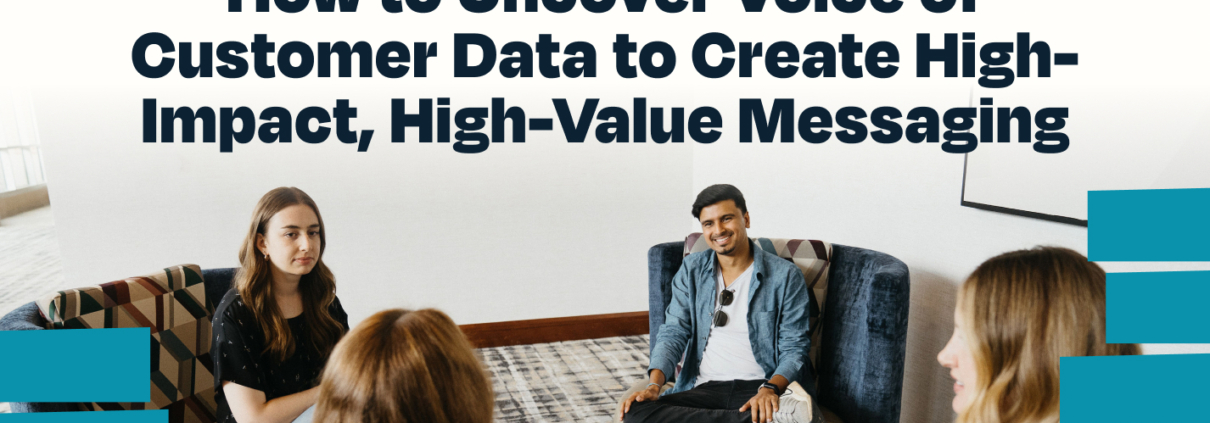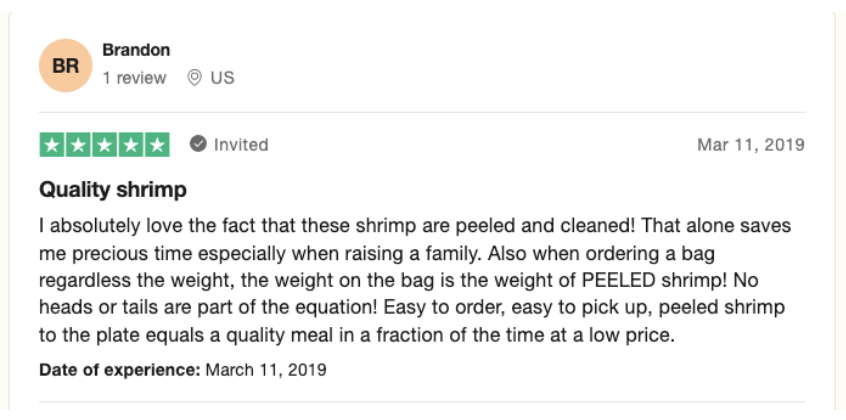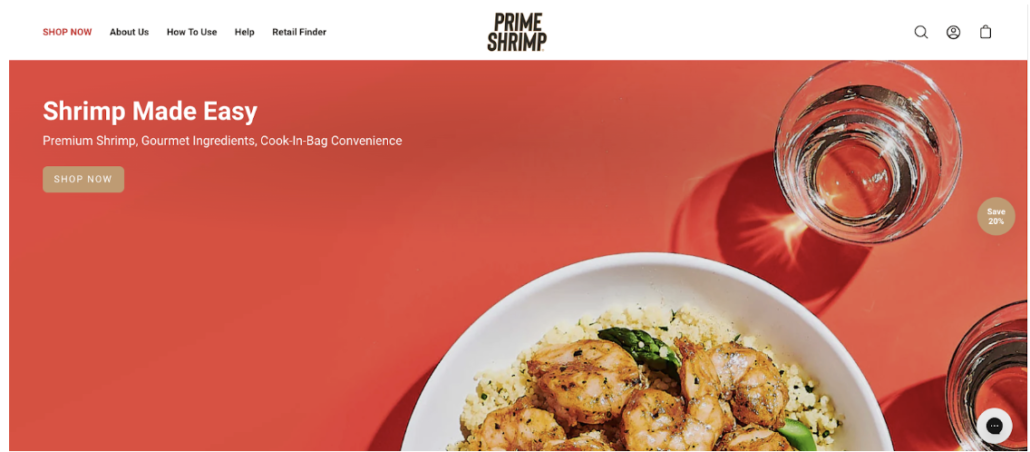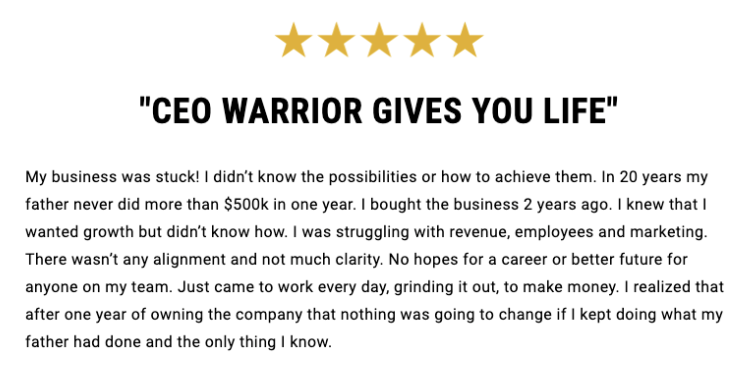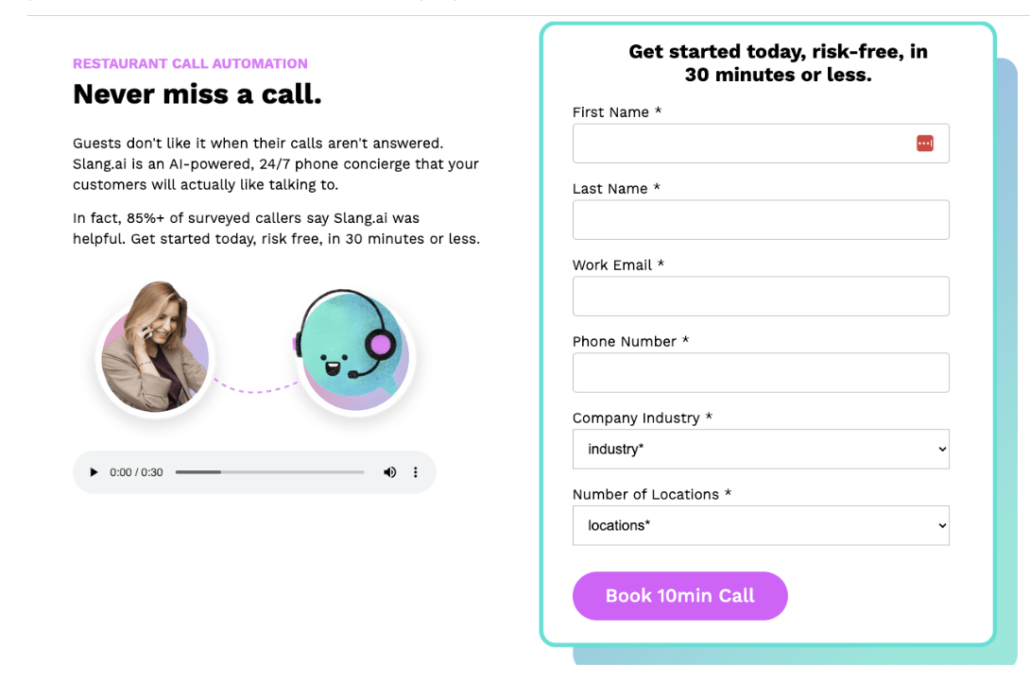How to Uncover Voice of Customer Data to Create High-Impact, High-Value Messaging
What do the most successful companies have in common? They put their customer first. Companies that focus on creating products and services that solve a customer problem win. Why? Because when you’re intimately in step with your customer’s needs, you’re no longer just selling. You’re connecting.
The best and only way to create this type of value and impact is by listening to the customer. The good news? Even if you don’t have an established customer base, there are several ways you can put your ear up to the receiver and tune in to the conversation.
In this post, we’ll guide you through how to uncover voice of customer data to create high-impact, high-value messaging that sticks.
Let’s dive in 👂
Meet your growth marketing north star: messaging 🌟
Your messaging guides every piece of communication you create at every touch point along the customer journey. It refers to the actual words you use and the emotions and feelings those words evoke. Messaging touches nearly every aspect of the business, including website content, social ads, emails, product descriptions, and more.
Why does messaging matter? People consume more than 485 minutes of digital media every day. If you’re going to stand out, you need to craft scroll-stopping messaging that hits just right. Your messaging needs to bridge the gap between your product’s value and your audience’s mindset. The more effectively you can do that, the better chance you have at getting them to take action.
Strategic messaging clearly and consistently communicates two things:
- Your value: your elevator pitch – why you’re the best solution to the problem(s) someone is facing.
- Your values: your story – what you stand for and why you’re here to help.
But here’s the real kicker: both your value and your values must be deeply rooted in the lived experience of your target audience. Your message should clearly address your audience’s individual and collective problems, fears, desires, and preferences.
Why? Because we’re all human. People want to know that you’re committed to helping them, not just bolstering your bottom line. If you want to build lasting relationships with your audience, you need to understand where they’re at and what they need.
While there’s no magic messaging formula, you can use a few hacks to learn more about your audience and improve how you communicate with them. What’s the best place to start? Go straight to the source – your audience👇
Research → Data → Real Customer Insights 🤓
Here at Tuff, as a growth marketing agency, we use data to inform every decision we make for our partners. From creative design to website UX to messaging, we’re constantly digging in the weeds to discover juicy bits of info that’ll inform our decision-making processes. At the center of it all → the customer experience.
Our research and data mining tells us a story about the customer. It unlocks insights about who they are, what they care about, how they behave online, and where we can reach them. From there, we can better understand their needs and more effectively communicate with empathy and value.
What is “voice of customer” (VoC) data? 🎤
The customer is the protagonist in our epic tale. While the story may have many voices (stakeholders, product designers, employees), only one matters most. The voice of the customer.
Voice of customer (VoC) data refers to insights and information gathered directly from customers about their wants, needs, and expectations for a product or service. There are various ways to gather this type of data, including (but not limited to) site traffic analysis, customer surveys, social media monitoring, and competitor research.
This type of research focuses not just on what the customer “says” but also on how they react, browser, “like,” click, and navigate the online space.
From here, we can extract trends, patterns, and themes from the exact language our ‘hero’ in the story uses.
- Is an event or circumstance triggering their search for a solution (e.g., “I’m worried about my aging loved one’s safety at home”)?
- Do customers use specific phrases or slang to describe their problem (e.g., “I’m grinding every day in my business and still feeling stuck”)?
- What interests or hobbies do they share (e.g., “I love cooking,” “I’m passionate about woodworking,” “I’ve always wanted to learn guitar”)?
These are the golden nuggets of language and information we can pull from VoC data to make more strategic, customer-driven messaging choices.
Infusing VoC into every piece of content ✍️
Once you know your audience, you can infuse their attitudes, opinions, objections, and desired outcomes directly into the content you create. Things like:
- High-impact hero messages
- Scroll-stopping ad copy
- Value-focused white papers
- Engaging video content
- Digestible blog posts
- Click-worthy call-to-actions
- Attention-grabbing subject lines
- And more…
Here are a few examples of this concept in action:
🍤 Meet our partner, Prime Shrimp
- What they do: D2C Cook-In-Bag Frozen Shrimp Retailer
- VoC Data:
- VoC in Action (Website Page): A simple, compelling homepage hero headline: “Shrimp Made Easy”. This headline effectively highlights how easy it is to pick up, prepare, and cook. No mess, no fuss.
🛡️Meet our partner, CEO Warrior
- What they do: Growth-Focused Business Coaching and Leadership Training for Home Service Business Professionals
- VoC Data:
- VoC in Action: An impactful, straight-to-the-point Facebook ad calling out the problem and enticing viewers to get “unstuck” from the daily grind of their business operations.
☎️ Meet our partner, Slang
- What they do: An Always-On, AI-Powered Phone Concierge for Businesses
- VoC Data: Site analytics showed solid traffic to their restaurant contact form page but very few form submissions. The existing copy used the word “submit.” Our research found that this phrase was too vague and didn’t tell the user the result of submitting the form. Thus, fewer conversions.
- VoC in Action (CTA Button Text): We swapped “Submit” for “Book 10min Call” and saw great results from this simple messaging tweak.
Searching for VoC data: where to start? 🔦
It’s time to roll up your sleeves and start the search to uncover all the biggest and brightest customer insights out there. To help you narrow your search and make the best use of your time, we’ve compiled our top five sources for finding valuable, usable VoC data.
⚡Tip: Before you activate the Google machine, take time to create a list of keywords, including your brand name, your product type or category, competitor brands, competing solutions, etc. A little front-end keyword research and organization will streamline your search and get you to the right place faster.
Top sources for VoC data
#1 – Analyse your site traffic and user behavior.
You might be thinking, “wait, I thought we were searching for the customer’s voice?” And you’re right. But, in addition to the actual words they’re used, you’re also looking for information about their experience. With tools like Google Analytics and HotJar, you can gather data related to user actions on your website to better understand how visitors experience and interact with your product pages.
With this information, you can implement messaging strategies that improve their experience, reduce bounce rates (aka keep them on the page longer), and eliminate points of friction that may prevent them from taking action (aka converting).
#2 – Monitor your customers on social media activity
Social media is an excellent way to tap into relevant ongoing conversations that customers are having about your brand (or your competitors). Unlike reviews or surveys, social media activity is honest, unfiltered feedback.
Sit back and quietly listen to candid conversations about your product or service on platforms like Twitter, LinkedIn, and Instagram. Look for trends in the stories they’re telling each other. Use keywords, phrases, and hashtags to find the forums (Reddit) and online communities (Facebook) where like-minded users interact and share advice and feedback.
#3 – Sift through customer reviews
Customer reviews are your VoC data goldmine. 95% of customers read reviews before purchasing a product. From a customer’s perspective, reviews are a mutually beneficial feedback loop. People can share their experiences (positive or negative) with others and make more informed decisions based on someone else’s experience.
From a VoC data perspective, reviews are chock-full of customer stories, phrases, and opinions. Reviews are a quick and easy way to figure out exactly how your customers feel about the quality and value of your product or service.
Here are a few popular review sites categorized by industry:
- General: Trustpilot, BBB, Google, Amazon, Consumer Reports
- Travel / Food & Beverage: TripAdvisor, Yelp,
- Home Services: Angies List, HomeAdvisor
- Tech: G2, Capterra
🔴 Fake reviews: When reading reviews, be weary of anything that sounds fake, unnatural, or a little too “cheezy” (think: “this is the greatest vacuum ever” vs. “great vacuum, but battery life is lacking”)
#4 – Complete competitor analysis
While a competitor analysis isn’t the fastest route to VoC data, it is a high-priority, high-value exercise. Our digital world is growing rapidly. With that comes increasing competition to win the customer’s attention and loyalty. You need to know what you’re up against to come out on top.
Your mission: identify and audit your competitor’s pages and customer reviews.
- How do they describe their benefits and value?
- What stories do they tell?
- How do they describe their products and services?
- What are they selling? And for how much?
- What phrases or calls to action stand out?
From there, you can identify your key differentiators. What makes you different? Where and how are you winning? What gaps in the customer experience do you fill?
The result: a critical understanding of the competitive landscape, the messaging used by competitors (and their customers), and what sets you apart.
#5 – Ask your customer-facing team
Do you have people on your team who regularly interact with the customer (in-person or online)? Maybe it’s your sales team? Or your online chat representatives? Or the receptionist behind the front desk? As you’re going out on your search for VoC data online, it’s easy to forget that there are people internally who have an intimate understanding of your customer needs, pain points, and frustrations.
Talk to team members who regularly listen to customer feedback and questions. Tease out valuable VoC snippets from phone conversations, emails, and chat transcripts. Not only will this help you identify key messaging, but it will also help you train front-line employees to better communicate with your customers.
Other direct methods for gathering customer insights that aren’t covered here include customer surveys, interviews, and focus groups. If you’re looking to dig a little deeper and engage in more direct conversations with your customers, try one of these methods.
Don’t forget your spreadsheet
You’ve done the hard work identifying all the key messages circulating on the internet about your business, product, competitors, and customer experience. Now comes the fun part: organizing and categorizing your research into one easy-to-use document.
By organizing your data, you can more easily identify trends and patterns in the data. This document can also be a reference point for you and your team to refer back to when you need inspiration or ideas for new campaigns.
Activate, Analyze, Refine, Repeat
Hot take: we’re never done learning. This initial research and discovery process is just the beginning. Your customer feedback, attitudes, and needs may shift and change as your business grows and evolves. As a result, you’ll need to stay on your toes and continually collect VoC data to inform future decisions and strategies.
At Tuff, we make the process simple. After we’ve activated a campaign, we analyze the data. Which ad copy resonated most with our target audience? Which email subject line in our A/B test performed better? How did the updated call-to-action button text affect conversion?
From there, we identify our key learnings and refine our messaging accordingly. We refer back to the customer and search for new opportunities to engage with them more effectively. Then, we go back to the drawing board and do it all over again.
We put our partner’s audience in the driver’s seat from day one. No magic messaging formula required. Need a partner to help you create high-impact, high-value messaging that resonates with your target audience and drive conversions? Let’s talk.
